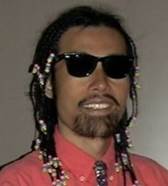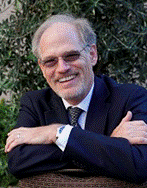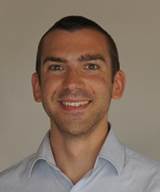|
Keynote
1, Monday, September 5, 2016, 14:00 h:
Prof.
Hans-Christian Hege,
Zuse Institute Berlin, Germany:
“Visualization
– from Leonardo da Vinci’s drawings to Pokémon GO”
|

|
Abstract
With the technical implementation of universal
computing machines, the mass production of personal computers, smart phones and
game consoles, and the connection of these devices to a global digital network,
humankind has accomplished the transition from the Gutenberg galaxy in the
Turing galaxy.
Humans are integrated into the digital
universe via various senses – the major one being the visual sense. With modern
visualization techniques, information available in the digital universe can be
presented to humans in a sensible way.
The advancement of digital devices to
powerful personal assistants requires also “to get the world into the
computer”. For this purpose, digital devices are equipped with sensors and
related processing capabilities – the major ones again being image-based.
Current consumer devices thus rely heavily on image-based techniques: image
acquisition, computer vision, image synthesis, data visualization, visual
analytics, visual display – and combinations of such techniques, enabling,
e.g., virtual reality or augmented reality. In the talk I will present an
overview, outline some recent developments mainly from a visualization
perspective, and speculate about the future.
Biography
Hans-Christian Hege is head of the
Department ‘Visual Data Analysis’ at Zuse Institute Berlin (ZIB). After
studying physics and mathematics he continued with postgraduate studies in
computational physics and quantum field theory at Freie Universität Berlin
(1984-1989). Then he joined ZIB as a scientific consultant for high-performance
computing. In 1991 he built up the Scientific Visualization department at ZIB,
where research in visual data analysis is conducted and visualization software
is developed, such as Amira. His research interests include visual computing as
well as applications in life sciences, natural sciences and engineering. He
taught as guest professor at Universitat Pompeu Fabra, Barcelona, and as
honorary professor at the German Film School (University for Digital Media
Production) / Film School Babelsberg. He is co-founder of the book series
Mathematics + Visualization at Springer-Verlag and he has chaired several
international IEEE and Eurographics symposia in the area of computer graphics
and data visualization. He has co-founded the companies Mental Images (1986;
now: NVIDIA Advanced Rendering Center), Indeed-Visual Concepts (1999; now:
Visage Imaging) and Lenné3D (2005). For more information, visit
www.zib.de/hege.
|
Keynote
2, Monday, September 5, 2016, 18:00 h:
Prof.
Carolyn McGregor,
University of Ontario Institute of Technology,
Canada:
“New approaches for the integration of
Haptic Garments, Big Data Analytics, and Serious Games for Extreme
Environments”
|

|
Abstract
Providing technology solutions to
advance the discipline of Life Sciences requires an interdisciplinary approach.
The IEEE Life Sciences Technical Community was formed with a mandate to assist
with creating mechanisms to coordinate the diverse LS related activities across
IEEE and to promote and publicize IEEE LS across and outside of IEEE. Our role
is to develop new topics and advance unique niche areas of interest to the LS
community. In recent years, new directions in consumer electronics have
provided new opportunities not only in treating and evaluating patients who
suffer from chronic conditions, but also in managing and maintaining the
well-being of healthy individuals. The latter is particularly important for
those performing mission critical tasks in space, on the battlefield, or in
regions with climate extremes (e.g. the Arctic and Antarctic regions). These
environments are often unstructured and the impact the environment can create
can be unknown. All these situations create stressors for both equipment and
people, and new approaches to training are beginning to recognise the need to
integrate these stressors into the training activities. Creating solutions in
this setting require innovation with the engagement of many different
engineering disciplines along with the end user communities. In this talk we
will demonstrate an example of this type of interdisciplinary collaboration for new approaches for the
integration of Haptic Garments, Big Data Analytics, and Serious Games for First
Responder resilience training and review the role of Consumer Electronics
within this setting.
Biography
Professor Carolyn McGregor AM is the
Canada Research Chair in Health Informatics based at the University of Ontario
Institute of Technology. Dr McGregor has led pioneering research in Big Data
analytics, real-time event stream processing, temporal data stream data mining,
business process modelling and cloud computing. She now progresses this
research within the context of critical care medicine, mental health, astronaut
health and military and civilian tactical training.
She has been awarded over $10 million in
research, consultancy and infrastructure funding and has led multiple large
research programs including a multi-million dollar First of A Kind (FOAK)
research program with IBM. She has over 150 refereed publications, 3 patent in
multiple jurisdictions and has established two startup companies resulting from
her research. She has extensive research collaborations in Canada, China, USA,
Russia, Australia and India. She has also been called upon to advise various
government working groups in Canada. She has received many awards for her
research and in 2014 she was awarded membership in the Order of Australia for
her significant service to science and innovation through health care
information systems. In 2016-17 she serves as the Chair of the IEEE Life
Sciences Technical Community.
|
Keynote
3, Tuesday, September 6, 2016, 10:40 h:
Dr.
Akihiko “Ken” Sugiyama,
NEC Data Science Research Labs, Japan:
“Signal
Enhancement in Cellphone Handsets, PCs, and Digital Still Cameras/Camcorders”
|

|
Abstract
This lecture presents the A to Z of
signal enhancement when it is applied to consumer products such as cellphone
handsets, digital still cameras and camcorders, PCs and tablet computers, TV
receivers, and gaming controllers. Starting from basic single-channel signal
enhancement in the frequency domain, it continues on to two-channel processing
and multi-channel processing also known as microphone arrays. Types of noise to
be covered include environmental noise, mechanical noise, impact (or transient)
noise and wind noise. Problems and solutions that include recent topics are
discussed for each application from a viewpoint of the algorithm and
implementation. Sound demonstrations will be provided to help audience
understand the effect of solutions.
Biography
Akihiko Sugiyama (a.k.a. Ken Sugiyama),
affiliated with NEC Data Science Research Labs., has been engaged in a wide
variety of research projects in signal processing such as audio coding and
interference/noise control. His team developed the world's first Silicon Audio
in 1994, the ancestor of iPod. He served as Chair of Audio and Acoustic Signal
Processing Tech. Committee, IEEE Signal Processing Society (SPS) [2011–2012],
as associate editors for several journals such as IEEE Trans. SP [1994–1996],
as the Secretary and a Member at Large to the Conference Board of SPS [2010–2011],
as a member of the Awards Board of SPS [2015–], and as the Chair of Japan
Chapter of SPS [2010–2011]. He was a Technical Program Chair for ICASSP2012. He
has contributed to 16 chapters of books and is the inventor of over 150
registered patents with more pending applications in the field of signal
processing in Japan and overseas. He received 13 awards such as the 2002 IEICE
Best Paper Award, the 2006 IEICE Achievement Award, and the 2013 Ichimura
Industry Award. He is Fellow of IEEE and IEICE, and a Distinguished Lecturer in
2014 and 2015 for IEEE SPS. He is also known as a big host for a total of over
70 internship students.
|
Keynote
4, Tuesday, September 6, 2016, 14:00 h:
Dr.
Tom Coughlin,
President, Coughlin Associates,
Chair, IEEE CE Society Future Directions Committee, US:
“The
Memory of Cars”
|

|
Abstract
Automobiles are becoming rolling
applications platforms needing computing power, networking to other cars and
the cloud as well as digital memory and storage. This talk will look at the
requirements for memory as well as digital storage in automotive entertainment
and navigations systems, including expectations for cars with driver assist
features and autonomous driving. The evolution of memory and storage technology
are key elements for creating the deep learning capabilities required for the
car of tomorrow.
Biography
Tom Coughlin, President, Coughlin
Associates is a widely respected digital storage analyst as well as business
and technology consultant. He has over 35 years in the data storage industry
with multiple engineering and management positions at high profile companies.
Dr. Coughlin has many publications and six patents to his credit. Tom is also
the author of Digital Storage in Consumer Electronics: The Essential Guide,
which was published by Newnes Press. Coughlin Associates provides market and
technology analysis as well as Data Storage Technical and Business Consulting
services. Tom publishes the Digital Storage Technology Newsletter, the Media
and Entertainment Storage Report, the Emerging Non-Volatile Memory Report and
other industry reports. Tom is also a regular contributor on digital storage
for Forbes.com and other blogs. Tom is active with SMPTE, SNIA, the IEEE (he is
Director for IEEE Region 6 and active in the Consumer Electronics Society where
he is chairman of the Future Directions Committee) and other professional
organizations. Tom is the founder and organizer of the Annual Storage Visions
Conference (www.storagevisions.com), a partner to the International Consumer
Electronics Show, as well as the Creative Storage Conference
(www.creativestorage.org). He is the general chairman of the annual Flash
Memory Summit. He is a Senior member of the IEEE, Leader in the Gerson Lehrman
Group Councils of Advisors and a member of the Consultants Network of Silicon
Valley (CNSV). For more information on Tom Coughlin and his publications go to
www.tomcoughlin.com.
|
Keynote
5, Wednesday, September 7, 2016, 12:20 h:
Dr.
Jean-Charles Bazin,
Disney Research, Switzerland:
“Visual
Computing for the Entertainment Industry”
|

|
Abstract
Visual computing encompasses the
computer science disciplines (especially computer graphics and computer vision)
dealing with visual content, such as images, videos and 3D models. This
fascinating field is at the heart of numerous applications in our daily life,
for example in medicine, education, arts and robotics to name just a few. In
this talk, I will present our work at Disney Research on visual computing in
the context of the entertainment industry. In particular, I will show applications
for visual effects in movies, digital painting, video manipulation and virtual
reality. I will also discuss research issues and solutions, as well as some of
the grand open challenges.
Biography
Jean-Charles Bazin is a researcher at
Disney Research (The Walt Disney Company) and an adjunct lecturer at ETH Zurich.
He has been working on several aspects of visual computing, in particular
computer vision, computer graphics and multimedia. A representative list of
topics includes video editing, 3D telepresence, omnidirectional vision,
audiovisual media processing, cultural e-heritage and virtual reality. He
published several papers, for example in the premier venues of computer vision
(TPAMI, CVPR, ECCV and ICCV) and graphics (SIGGRAPH, SIGGRAPH Asia and Eurographics).
Some of his work gained much interest such as his recent video manipulation
project called FaceDirector. Before joining Disney Research, he was a Postdoc
and a Senior Researcher at ETH Zurich, and he also worked as a Postdoctoral
Fellow at the University of Tokyo. He obtained his MS degree at the Université
de Technologie de Compiegne, France, and his PhD degree at KAIST, South
Korea. He co-organized the CVPR 2016 workshop on “Computational Cameras and
Display” as well as the ECCV 2016 workshop on “Computer Vision for Audio-Visual
Media”.





